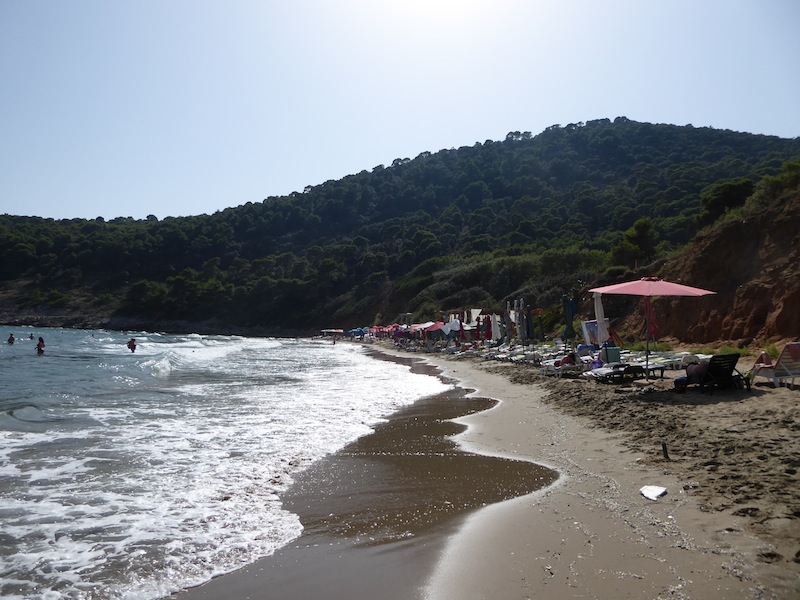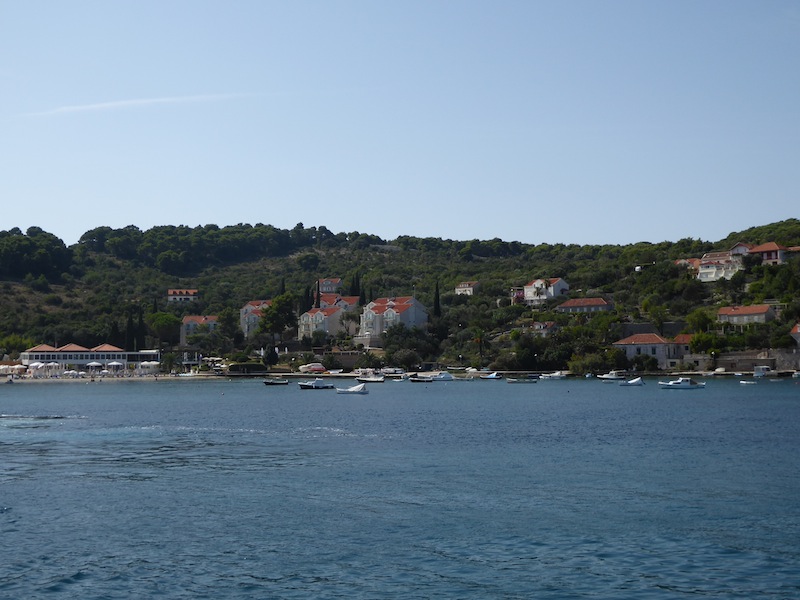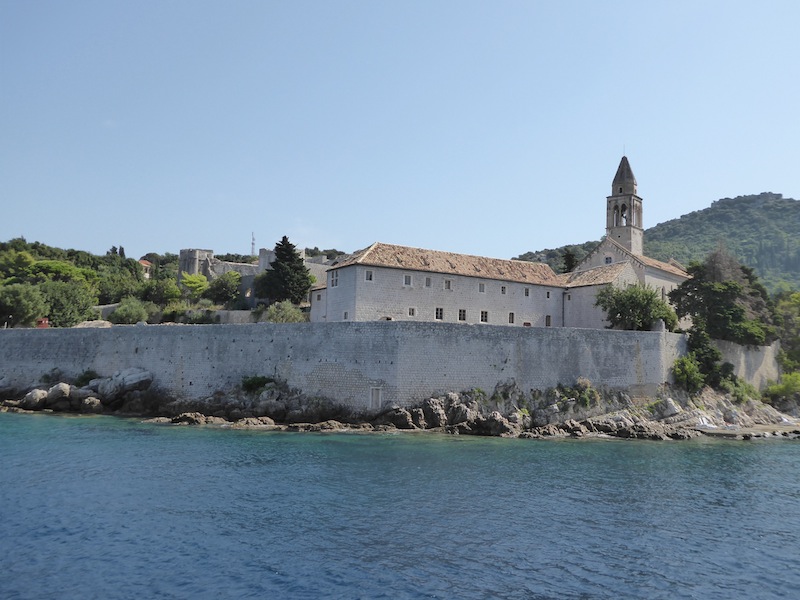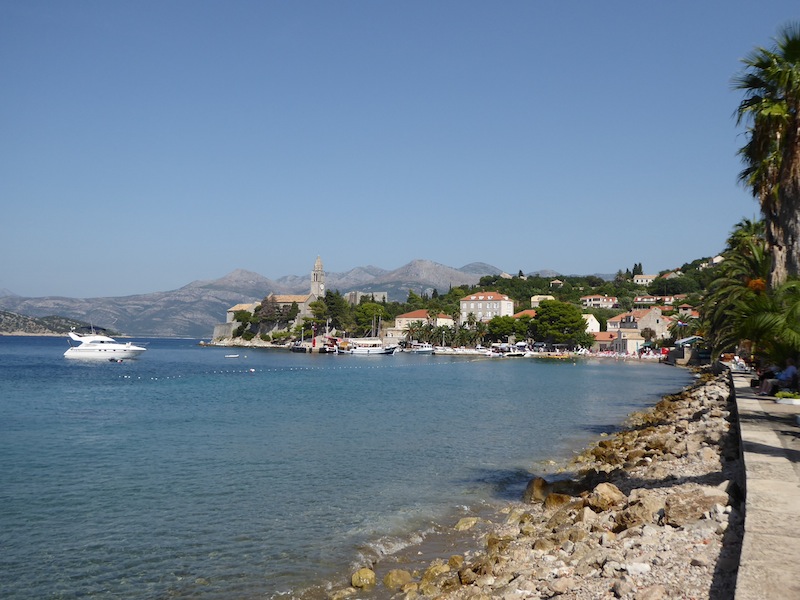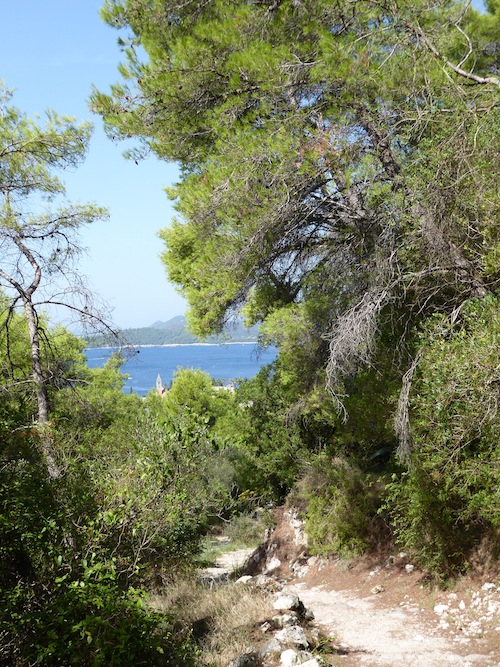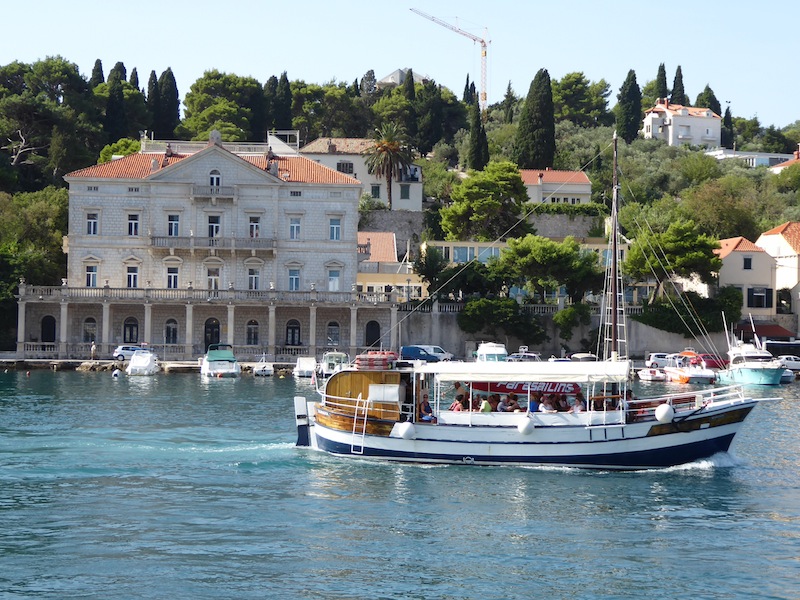There are something like 1,000 islands along the Croatian coast. Lopud is one, part of the Elaphiti chain that lies just a few miles from the city of Dubrovnik. Its main attraction in rocky Croatia is its sandy beaches.
During our stay in the beachside suburb of Lapad in 2015 we couldn’t avoid the touts trying to tempt us into taking one of their organised boat trips to the islands. Free food! Free drink! Special offer! Hurrah! But they’re not really for us. Being herded around on a coach trip from a Carry On film might be fun for some, but we opted for the DIY approach and it’s not hard to do. The inhabited islands in the group are linked to Dubrovnik by a morning ferry from the city’s main harbour at Gruz. It’s cheap, the tickets can be bought from a booth across the street from the dock and the ferry itself, the Postira, is perfectly adequate for the task. I discovered that it was as old as me, a 1963 vintage.
Tourists made up the bulk of the crowd on our trip but the ship is also a vital lifeline for the islands’ inhabitants, carrying everyday supplies from the mainland. We crawled slowly out of the harbour, past giant cruise ships, billionaires’ yachts and dinky fishing vessels. Beyond the shelter of the bay, the Adriatic was a lot choppier.
Kolocep was the first stop, the smallest of the three main islands and very attractive from a distance. A fake pirate ship, moored in the tiny harbour, was being loaded with lots of lobster-skinned tourists fresh from their whistle-stop visit. It looked as tacky as it sounds.
Car-free Lopud was the next stop (Sipan – the largest – would be the last). As we approached, it looked like it’s neighbour – hilly, dotted with the rocky ruins of forts and other ancient buildings. The hills were smothered with trees and scrub.
We rounded the headland to a busier harbour, populated with cafes, stalls, historic stone buildings and, to one side, a large and modern hotel. It all looked wonderful in the September sunshine. Locals bustled about, ready to unload the supplies. The harbour is guarded by a fortified monastery dating from the 15th century, but it’s not in the best of conditions these days. After getting our bearings I wandered into the little church at its heart but it looked a little sad, propped up by scaffolding, its walls peeling in places.
The charming seafront had rather more life, given over mainly to the tourist dollar, and sandy beaches stretched around the bay for those who didn’t want to wander far. We were surprised to find a few grand stone villas crumbling into the island’s soil, their roofs missing. A little further up, the Grand Hotel, a modernist, concrete relic of the Communist era, stood derelict with just a few signs of faded glamour on show. During our stay it was the preserve of some workmen who seemed to be giving it a new lease of life. The grounds were overgrown and a few concrete benches sheltered beneath giant palm trees. It proved that Lopud has been attracting holidaymakers for decades.
Alongside the Grand we followed the path across the island to Lopud’s main attraction – the sandy Sunj beach. It was a sweaty climb uphill past fruit and veg plots, apartments, fly-tipped rubbish and ruins. The views were great before we descended through woods of cypress, lemon, orange and pine and emerged at the beach by a couple of cafe-bars.
It was a bit of a disappointment. True, it was great to see sand and the bay was uncluttered by development. The sea, whipped up by a brisk breeze, crashed onto the shore, and the headlands were covered in attractive greenery. Behind us, more hills, more greenery, some trees just hanging on to some shallow but crumbly sandstone cliffs.
But the beach was a bit scrubby and tired sunbeds and umbrellas were scattered along the shore. There was too much litter and the decaying remains of beach life. Just a bit of effort could’ve made it a truly idyllic spot. Perhaps we’d just got it on a bad day… Still, we hired a couple of sunbeds, got out our books and read. I took a few dips in the water and got thrown about by waves and together we took a break in the bar with a beer and pizza.
I felt a bit lazy not exploring the island more. Several walks would’ve taken us into the hills, to the ruins of religious, military and residential buildings dating back centuries. In fact, Lopud has been popular with the moneyed folk of Dubrovnik for centuries – folk who built their mansions and villas around the island.
Later, clouds rolled over and so we headed back to the village, this time paying our 10kr to take a ride on one of the golf trolleys that run between the two main bays. There, with the sun out again, we both went into the dead calm waters and ended up with tar on our feet.
We dried off, stopped off for a few beers in one of the seafront bars, watched the world go by and the sun falling towards the horizon, waiting for the ferry back to Dubrovnik. And it was beautiful.
On the trip back, we sat on the bow of the Postira as the sun set and allowed the wind to clear away the cobwebs. Lopud was definitely worth it.

